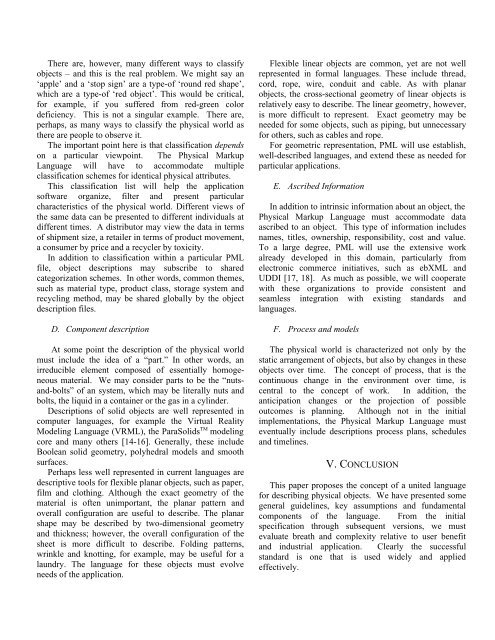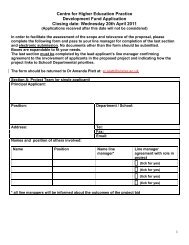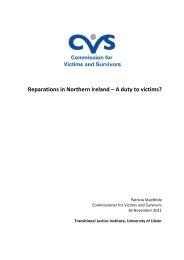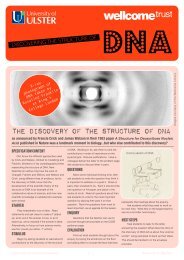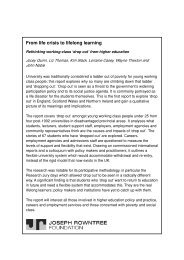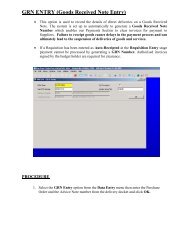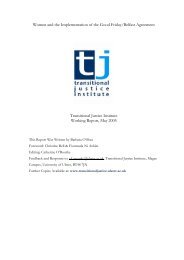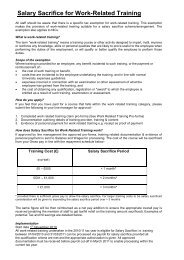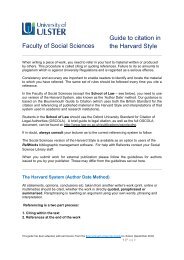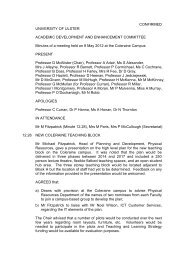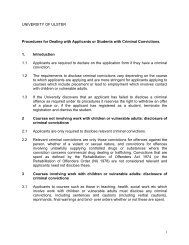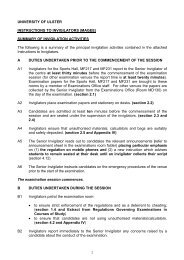The Physical Markup Language - Auto-ID Labs
The Physical Markup Language - Auto-ID Labs
The Physical Markup Language - Auto-ID Labs
You also want an ePaper? Increase the reach of your titles
YUMPU automatically turns print PDFs into web optimized ePapers that Google loves.
<strong>The</strong>re are, however, many different ways to classify<br />
objects – and this is the real problem. We might say an<br />
‘apple’ and a ‘stop sign’ are a type-of ‘round red shape’,<br />
which are a type-of ‘red object’. This would be critical,<br />
for example, if you suffered from red-green color<br />
deficiency. This is not a singular example. <strong>The</strong>re are,<br />
perhaps, as many ways to classify the physical world as<br />
there are people to observe it.<br />
<strong>The</strong> important point here is that classification depends<br />
on a particular viewpoint. <strong>The</strong> <strong>Physical</strong> <strong>Markup</strong><br />
<strong>Language</strong> will have to accommodate multiple<br />
classification schemes for identical physical attributes.<br />
This classification list will help the application<br />
software organize, filter and present particular<br />
characteristics of the physical world. Different views of<br />
the same data can be presented to different individuals at<br />
different times. A distributor may view the data in terms<br />
of shipment size, a retailer in terms of product movement,<br />
a consumer by price and a recycler by toxicity.<br />
In addition to classification within a particular PML<br />
file, object descriptions may subscribe to shared<br />
categorization schemes. In other words, common themes,<br />
such as material type, product class, storage system and<br />
recycling method, may be shared globally by the object<br />
description files.<br />
D. Component description<br />
At some point the description of the physical world<br />
must include the idea of a “part.” In other words, an<br />
irreducible element composed of essentially homogeneous<br />
material. We may consider parts to be the “nutsand-bolts”<br />
of an system, which may be literally nuts and<br />
bolts, the liquid in a container or the gas in a cylinder.<br />
Descriptions of solid objects are well represented in<br />
computer languages, for example the Virtual Reality<br />
Modeling <strong>Language</strong> (VRML), the ParaSolids TM modeling<br />
core and many others [14-16]. Generally, these include<br />
Boolean solid geometry, polyhedral models and smooth<br />
surfaces.<br />
Perhaps less well represented in current languages are<br />
descriptive tools for flexible planar objects, such as paper,<br />
film and clothing. Although the exact geometry of the<br />
material is often unimportant, the planar pattern and<br />
overall configuration are useful to describe. <strong>The</strong> planar<br />
shape may be described by two-dimensional geometry<br />
and thickness; however, the overall configuration of the<br />
sheet is more difficult to describe. Folding patterns,<br />
wrinkle and knotting, for example, may be useful for a<br />
laundry. <strong>The</strong> language for these objects must evolve<br />
needs of the application.<br />
Flexible linear objects are common, yet are not well<br />
represented in formal languages. <strong>The</strong>se include thread,<br />
cord, rope, wire, conduit and cable. As with planar<br />
objects, the cross-sectional geometry of linear objects is<br />
relatively easy to describe. <strong>The</strong> linear geometry, however,<br />
is more difficult to represent. Exact geometry may be<br />
needed for some objects, such as piping, but unnecessary<br />
for others, such as cables and rope.<br />
For geometric representation, PML will use establish,<br />
well-described languages, and extend these as needed for<br />
particular applications.<br />
E. Ascribed Information<br />
In addition to intrinsic information about an object, the<br />
<strong>Physical</strong> <strong>Markup</strong> <strong>Language</strong> must accommodate data<br />
ascribed to an object. This type of information includes<br />
names, titles, ownership, responsibility, cost and value.<br />
To a large degree, PML will use the extensive work<br />
already developed in this domain, particularly from<br />
electronic commerce initiatives, such as ebXML and<br />
UDDI [17, 18]. As much as possible, we will cooperate<br />
with these organizations to provide consistent and<br />
seamless integration with existing standards and<br />
languages.<br />
F. Process and models<br />
<strong>The</strong> physical world is characterized not only by the<br />
static arrangement of objects, but also by changes in these<br />
objects over time. <strong>The</strong> concept of process, that is the<br />
continuous change in the environment over time, is<br />
central to the concept of work. In addition, the<br />
anticipation changes or the projection of possible<br />
outcomes is planning. Although not in the initial<br />
implementations, the <strong>Physical</strong> <strong>Markup</strong> <strong>Language</strong> must<br />
eventually include descriptions process plans, schedules<br />
and timelines.<br />
V. CONCLUSION<br />
This paper proposes the concept of a united language<br />
for describing physical objects. We have presented some<br />
general guidelines, key assumptions and fundamental<br />
components of the language. From the initial<br />
specification through subsequent versions, we must<br />
evaluate breath and complexity relative to user benefit<br />
and industrial application. Clearly the successful<br />
standard is one that is used widely and applied<br />
effectively.


